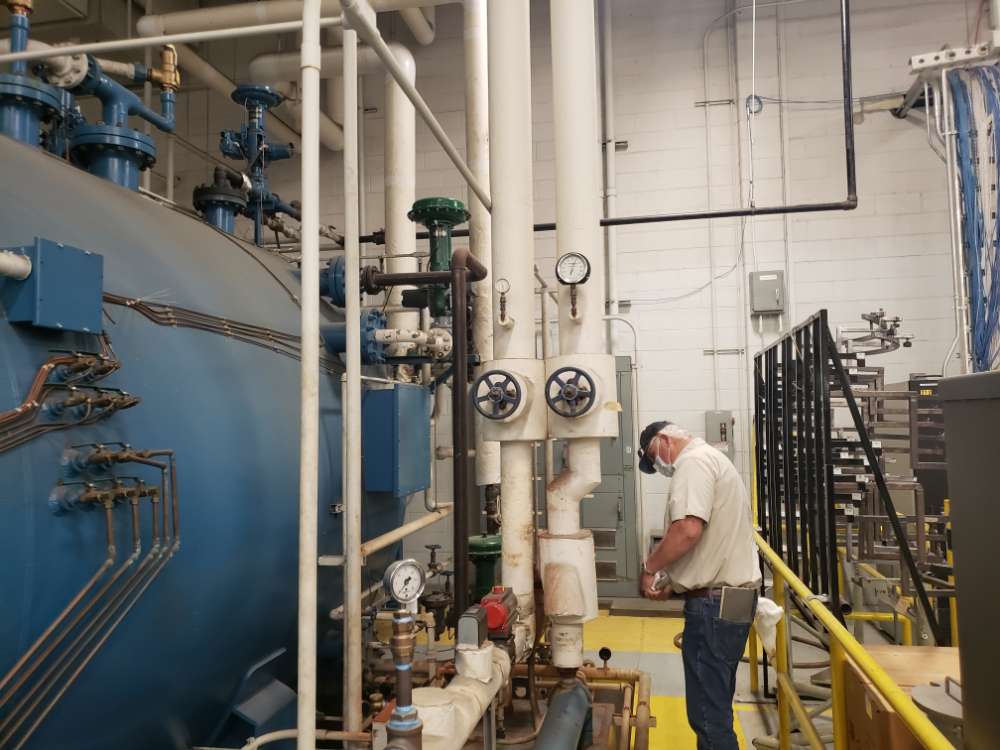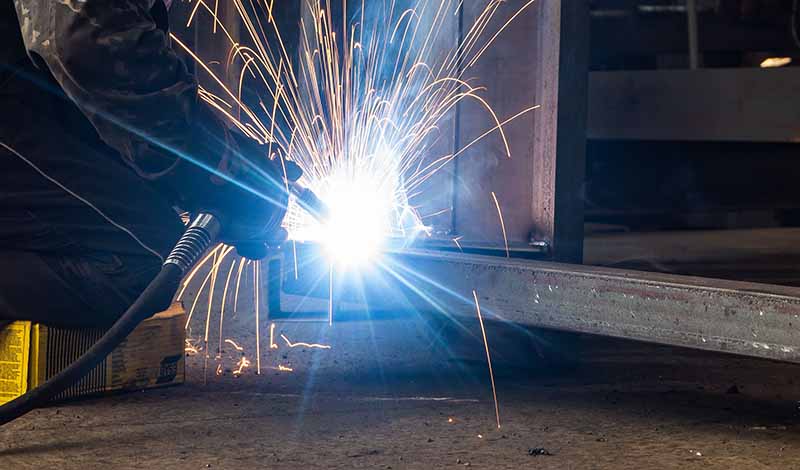
When it comes to keeping equipment and systems running smoothly, understanding the difference between preventive and corrective maintenance is crucial. These two types of maintenance represent fundamental approaches within the maintenance process, each with its own set of strategies, outcomes, and benefits.
In this guide, we’ll break down the basics of preventive and corrective maintenance and highlight their key differences.
Preventive maintenance is all about planning ahead. It’s a proactive approach designed to keep equipment in optimal condition and prevent failures before they happen. Preventive maintenance is scheduled based on factors such as usage, time, and condition.
The main goal of preventive maintenance is to reduce the likelihood of unexpected breakdowns or interruptions in equipment operation. By regularly performing maintenance tasks such as inspections, cleaning, lubrication, and replacement of worn parts, potential issues can be identified and addressed before they become major problems.
This approach not only helps in maintaining equipment health but also significantly reduces the chances of unexpected breakdowns. This is especially beneficial for critical equipment that can lead to costly downtime or safety hazards if they fail.
1
Implementing a successful preventive maintenance program requires careful planning and organization. It involves setting up a schedule based on the equipment’s usage and manufacturer recommendations, documenting each maintenance task, and ensuring the maintenance team is fully engaged in the process.
Maintenance managers play a key role in coordinating these efforts, creating work orders for each task, and tracking the program’s effectiveness. The goal is to create a seamless system where maintenance activities are anticipated and managed efficiently.
2
The advantages of adopting a preventive maintenance strategy are numerous. First and foremost, it extends the lifespan of equipment by keeping it in good working order. This approach also offers significant cost savings in the long run by minimizing expensive emergency repairs and downtime.
Moreover, regular maintenance contributes to a safer working environment by reducing the risk of accidents associated with equipment failure. Through preventive maintenance, businesses can enjoy increased reliability and performance of their machinery, contributing to overall operational success.
Corrective maintenance is the reactive side of maintenance strategies, focusing on addressing and repairing equipment after a failure occurs. Unlike preventive measures that schedule maintenance tasks ahead of time, corrective maintenance steps in when issues are detected or systems break down, aiming to quickly resolve problems and restore operational functionality.
This type of maintenance is essential for handling unexpected equipment failures, ensuring minimal disruption to operations.
In scenarios where equipment unexpectedly breaks down or a system failure is detected, corrective maintenance is necessary. It involves assessing the issue, determining the most effective solution, and performing the required repairs or adjustments.
This approach is crucial for maintaining continuous operations but can often lead to higher maintenance costs and unplanned downtime, affecting overall productivity in the long run.
1
Corrective maintenance, sometimes referred to as “reactive” maintenance, becomes necessary during unexpected breakdowns and system failures, situations where prior planning or predictive data might not be available. It’s the emergency response to get a piece of equipment back from failure to operational status.
While not ideal as a sole strategy, it’s an essential part of a comprehensive maintenance plan, ensuring that operations can continue even when the unexpected happens.
2
Relying solely on corrective maintenance poses several challenges and limitations. The primary concern is the high maintenance costs associated with emergency repairs and the unplanned downtime that comes with equipment failures.
In the long run, this reactive approach can lead to more significant wear and tear on machinery, reducing the overall lifespan of a piece of equipment and potentially leading to more frequent breakdowns.

Predictive maintenance marks a significant advancement in maintenance strategies, offering a proactive approach enhanced by data-driven insights. This method utilizes condition-based maintenance techniques and performing maintenance activities to predict when equipment might fail, allowing for intervention before issues become critical.
By monitoring equipment conditions in real-time, predictive maintenance helps avoid unplanned downtime and extends the lifespan of machinery.
Integrating predictive maintenance into an existing maintenance strategy involves several steps, beginning with the implementation of sensors and IoT devices to collect data on equipment performance. This data is then analyzed, often with advanced analytics, to identify patterns or signs that indicate potential failure.
By acting on these insights, maintenance managers can schedule maintenance tasks more effectively, ensuring resources are used efficiently and reducing the likelihood of equipment failure.
1
Incorporating predictive maintenance into an existing strategy involves a few critical steps. First, it requires the collection and analysis of data related to equipment performance, which can be used to predict future failures. This approach necessitates a shift towards a proactive maintenance strategy, where decisions are made based on actual equipment condition rather than predetermined schedules.
2
The success of predictive maintenance heavily relies on technology. IoT devices, sensors, and advanced analytics platforms play pivotal roles in gathering and interpreting data for predictive insights. This real-time monitoring and analysis allow for a more precise maintenance schedule, targeting only the equipment that shows signs of potential failure, thus optimizing maintenance efforts and resources.
Evaluating the financial impact of different maintenance strategies—preventive maintenance, corrective maintenance, and predictive maintenance—reveals distinct costs and savings associated with each. Preventive maintenance, by nature, is scheduled and regular, aiming to prevent issues before they occur, often leading to significant long-term cost savings by avoiding expensive emergency repairs and downtime.
Corrective maintenance, reactive to issues as they arise, can incur higher costs due to unplanned downtime and the urgency of repair needs. Predictive maintenance, though initially costly due to technology investment, ultimately proves cost-effective by optimizing maintenance schedules based on actual equipment conditions, leading to efficiency gains and reduced maintenance costs.
1
Calculating the return on investment (ROI) for preventive maintenance involves assessing both the direct cost savings from avoided repairs and the efficiency gains from sustained equipment performance.
This calculation typically compares the costs of regular maintenance tasks against the expenses saved by preventing major failures, highlighting the financial viability of a proactive maintenance approach. The ROI of preventive maintenance not only underscores the cost savings but also emphasizes improved safety and equipment longevity as key financial benefits.
2
Corrective maintenance often carries hidden costs beyond the immediate repair expenses. These include indirect costs like lost production time, increased labor for emergency repairs, and potential safety incidents arising from equipment failures.
Over time, the reliance on corrective maintenance can significantly impact productivity and equipment health, making it a less economically viable option in the long run compared to more proactive maintenance strategies.
Adopting a hybrid maintenance strategy that leverages the strengths of preventive, corrective, and predictive maintenance can provide a comprehensive approach to equipment management. This balanced strategy aims to minimize downtime, optimize maintenance costs, and ensure equipment operates efficiently.
By integrating these approaches, organizations can benefit from the foresight of predictive maintenance while maintaining the reliability of preventive measures and the responsiveness of corrective actions.
1
Effective hybrid maintenance strategies involve clear planning, communication, and the integration of technology to manage maintenance tasks. Best practices include setting clear objectives for maintenance activities, utilizing data analytics for predictive insights, and ensuring maintenance teams are trained to adapt to a combined approach.
This approach fosters operational efficiency and maximizes the lifespan and performance of equipment.
2
Integrating a hybrid maintenance strategy can present challenges, including cultural resistance to new practices, the need for training on new technologies, and difficulties in merging data from various sources.
To overcome these hurdles, maintenance managers should focus on clear communication of benefits, provide comprehensive training programs, and employ robust data integration tools to ensure a seamless transition to a hybrid approach.
The future of maintenance management is being shaped by advancements in AI and IoT technologies, which promise to revolutionize traditional practices. These technologies enable more sophisticated predictive analytics, automate maintenance tasks, and offer real-time monitoring of equipment conditions.
As these innovations continue to evolve, they will further enhance the ability of maintenance teams to predict, prevent, and efficiently respond to equipment needs, shaping a new era of maintenance strategy that is more efficient, cost-effective, and data-driven.
To learn more about maintenance strategies, contact our team of experts today. We can provide personalized recommendations for your organization and help you stay ahead of the curve in this rapidly changing landscape.
Diverse Industries, One Trusted Partner
Safety means more than compliance; it’s our covenant with you.







Whether you’re coordinating your next project or proactively planning your plant maintenance, there’s no better time than right now to contact us.